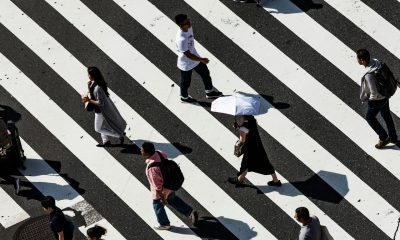Health
DOH ‘relatively pleased’ as firecracker injuries drop by 68%

“We are relatively pleased that we have recorded a 68-percent reduction in cases. ‘Relatively’ because there are still injuries reported, but ‘pleased’ because of the substantial reduction,” said DOH Secretary Francisco Duque III in a press briefing at the East Avenue Medical Center in Quezon City. (Photo: Department of Health (Philippines)/Facebook)
MANILA — The Department of Health (DOH) on Monday noted a significant reduction in terms of the number of firecracker-related injuries in its assessment for the period covering 6 a.m. of Dec. 21, 2017 until 6 a.m. of Jan. 1, 2018, compared to the same period last year.
“We are relatively pleased that we have recorded a 68-percent reduction in cases. ‘Relatively’ because there are still injuries reported, but ‘pleased’ because of the substantial reduction,” said DOH Secretary Francisco Duque III in a press briefing at the East Avenue Medical Center in Quezon City.
Duque said their monitoring had so far recorded a total of 191 cases for the said period, which was 77-percent lower than the five-year (2012-2016) average that the agency had previously recorded.
For the same period last year, he said the DOH had recorded a total of 604 cases.
He also described the decrease as significant because it surpassed the department’s target of 50-percent reduction for this year, which was attributed mainly to Executive Order No. 28 limiting the use of firecrackers nationwide.
He, however, said they would not be satisfied until the number of injuries goes down to “zero,” which actually is the department’s main goal.
“Nalampasan ng DOH ang target [with the latest data]. Pero mas maganda sana ay zero casualty. Iyun talaga ang gusto natin (The DOH has surpassed its targets with the latest data. But it would have been better if it was zero casualty because that is our ultimate desire),” he added.
He noted there were also individuals who suffered injuries in different parts of the body as they were hit by ignited firecrackers.
Emphasizing that the overall campaign of the government against firecrackers has contributed to the reduction in the number of injuries, Duque said: “We would also like to thank President Duterte for the passing of EO 28, which reinforced the efforts of the DOH and other concerned agencies, such as the Department of the Interior and Local Government, Bureau of Fire Protection, Philippine National Police, and EcoWaste Coalition, among others.”
The existence of injuries, Duque said, is still not acceptable, as their real goal was to make it zero. He said that they are still looking to push for a total ban on firecrackers nationwide.
“The ultimate goal is for a ban on firecrackers totally. This is still subject to discussion in the DOH so we can later make a recommendation to the President,” Duque said.
Based on the records of DOH from the sentinel hospitals that submitted reports, Piccolo remains as the top cause of firecracker injuries, with 94 cases; followed by kwitis, with 14 percent; unknown firecrackers, 12 percent; fountain, 10 percent; and boga, 9 percent.
Top anatomical sites of injury are hands with 115 cases; eye with 25; head with 23; forearm with 20; and legs with 13.
Of the total number of injuries, around seven people sustained blast injuries that required amputation, wherein portions of hands, such as fingers that were torn by the strong blasts, were cut by a bone cutter.
From the total number of cases, 123 or 64 percent were known to be active users; and 148 cases or 77 percent had occurred in the streets.
The National Capital Region still tops the list of the most number of cases, with 115 (60 percent), followed by Western Visayas, with 15 percent. The Bicol Region, Calabarzon, and Central Luzon have 13 cases each.
The City of Manila had the most cases with a total of 63 cases; followed by Quezon City with 14 cases, and Pasig City with 11 cases.
Meanwhile, Duque assured that all the hospitalization costs would be paid by the Philippine Health Insurance Corporation (PhilHealth) for PhilHealth members and its dependents.
For non-members, he said the DOH will take care of the expenses.
“Non-members also do not have to worry about expenses, as the DOH will be shouldering them through our Medical Assistance Program (MAP),” the Health chief said.
The final count for the number of injuries will be released by DOH on January 5, as part of the completion of data in the yearly comparison of the cases of injuries.
It is expected that more cases would be reported in the coming days for other victims who have yet to seek treatment in hospitals.
Earlier, the DOH had warned all those who suffered injuries to go to the nearest hospitals so that their wounds or burns caused by firecracker would be given the proper treatment, such as anti-tetanus shots to avoid complications.





















